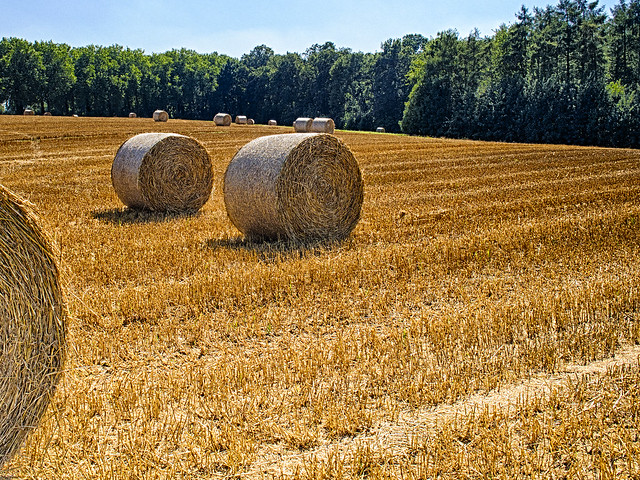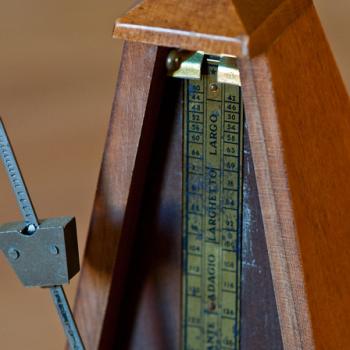
Making a Good Harvest
I was brought up in a place where life was all about making a good harvest.
Where I live now is different from where I was born and raised. There is more traffic here on more freeways. Where I grew up you were more likely to drive behind a vehicle moving slowly on a two-lane road. We have earthquakes, droughts, and brushfires here, but tornadoes and blizzards there. There are more people, from more different parts of the world, speaking more different languages, here.
One of the most significant differences is how people experience the month of October. Here, October is often the warmest month of the year. October is a month of fall movie openings, pumpkin spice lattes, and elaborate Halloween decoration.
Where I grew up, people appreciate October is intimately connected to food. October is the month when we reap what we have sown, when we gain from working hard and patiently struggling all summer long. October is the harvest month.
People where I grew up know food does not start out in a store. Food comes from the earth.
October is the month when we, like the pilgrims in Plymouth, find out whether we will have enough to make it through another winter. For many of us reading this, October is a time of gratefulness and thanksgiving. We have enough, and more. For many, gratefulness can be more challenging.
Even here, even with temperatures over ninety degrees, it is October. October is the harvest month.
Not everything we harvest is about food or eating or preparing for winter.
Whether we recognize it or not, we are diligently planting and tending our crops like good farmers. Some of us are particular about what we plant where while others scatter seeds less intentionally.
How are we making a good harvest this October?
What Will Our Harvest Bring?
I grew up around people who invested in each year’s harvest.
The cold winter months were spent planning and calculating ways to increase October’s harvest. People put their lives into preparing and choosing wisely, working hard, and hoping for the best results. Harvest was not about pumpkin spices or Halloween costumes.
Making a good harvest meant life was better for everyone. Poor harvests could be the end of the line.
Many of the people I know now do not understand the idea of planting and harvesting. They have never practiced gathering a harvest, either in a field or anywhere else.
It can be a challenge for us to see ourselves as farmers growing and gathering crops. We experience our lives in different ways with different, more contemporary metaphors.
A contemplative practice of making a good harvest is a complex combination of celebration and risk.
Some of us will experience the joy of finding our efforts have yielded much more than we planted. Others of us will look back, learn from our mistakes, and change how we prepare for our next harvest.
We may arrive at an October moment in our lives and realize for the first time how important this harvest will be. If only we had known and had seen our opportunities when we could have done something about them.
It is almost impossible to have a strong harvest if we begin planning and preparing in October. We need to understand where we are trying to go while we still have time to make it. It does not happen overnight.
As we consider what effect we have on the people around us, ourselves, and the rest of the world, what do we see? What are you harvesting this October? Do you have plans for next year?
Our Harvest Matters
The people with whom I grew up understand what difference each harvest makes.
They depend on a return on their crops for their financial livelihood. The crops they produce are food for people and animals who need them. Problems with a harvest affect more than the people who plant and tend those particular crops.
The same is true for us as we take care of what our lives produce. We want our lives to matter and make a difference. Many of us want a return on our investment. There are other people depending on the results we produce and share.
Like good farmers we choose what we want our lives to produce and how we hope to produce it. Many of us experience long seasons of hard work as we struggle to produce good qualities. Our efforts and the strengths they produce will feed us and other people as we plan for our next growing season.
Many of us are trying to produce several crops at the same time.
Our harvests are about more than what grows within ourselves. What we grow blossoms and pollinates crops in the people around us.
The significance of our harvest spreads.
Steps Toward Making a Good Harvest
The path to a good harvest begins months before October. Our first step is deciding what we want our efforts to produce.
What we choose to grow affects where and how we try to grow it. We need to prepare the soil, use the proper kinds of seeds, and tend our fields.
Another step is recognizing we cannot control everything we need for a good harvest.
The strength of our harvest depends on factors outside our control. We are like farmers who rely on the weather, the markets, insects, insights, timing, luck, and many other things.
We do our best, working hard to produce the crops we hope to have.
Our practice helps us become more patient and persistent. Each season has its own set of challenges and risks and produces its own rewards.
Each October reminds me of the harvests I remember from when I was growing up. The daylight got shorter and the temperatures cooled. Each day was a step away from summer and toward winter.
October is when we appreciate what harvest is all about.
How are we practicing making a good harvest this October?
Are we prepared for making a good harvest next October?
[Image by enneafive]
Greg Richardson is a spiritual director in Southern California. He is a recovering assistant district attorney and associate university professor and is a lay Oblate with New Camaldoli Hermitage near Big Sur, California. Greg’s website is http://StrategicMonk.com and his email address is StrategicMonk@gmail.com.

















